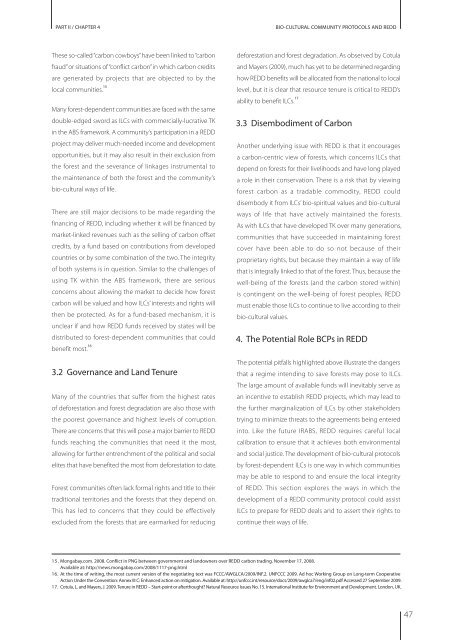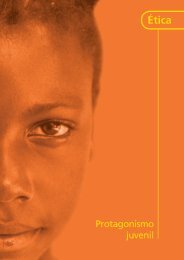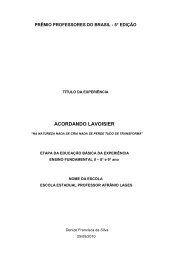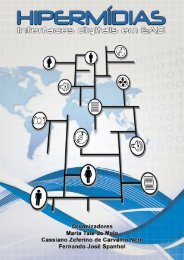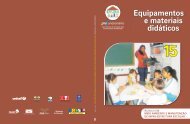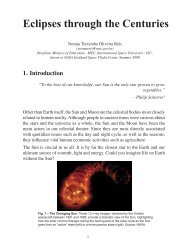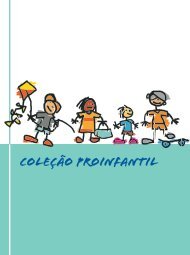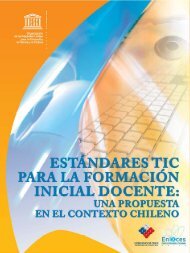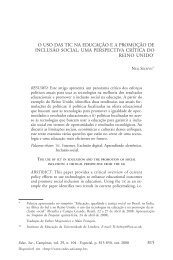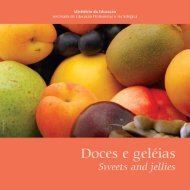BIO-CULTURAL COMMUNITY PROTOCOLS - Portal do Professor
BIO-CULTURAL COMMUNITY PROTOCOLS - Portal do Professor
BIO-CULTURAL COMMUNITY PROTOCOLS - Portal do Professor
You also want an ePaper? Increase the reach of your titles
YUMPU automatically turns print PDFs into web optimized ePapers that Google loves.
PART II / CHAPTER 4<br />
These so-called “carbon cowboys” have been linked to “carbon<br />
fraud” or situations of “conflict carbon” in which carbon credits<br />
are generated by projects that are objected to by the<br />
local communities. 15<br />
Many forest-dependent communities are faced with the same<br />
<strong>do</strong>uble-edged sword as ILCs with commercially-lucrative TK<br />
in the ABS framework. A community’s participation in a REDD<br />
project may deliver much-needed income and development<br />
opportunities, but it may also result in their exclusion from<br />
the forest and the severance of linkages instrumental to<br />
the maintenance of both the forest and the community’s<br />
bio-cultural ways of life.<br />
There are still major decisions to be made regarding the<br />
financing of REDD, including whether it will be financed by<br />
market-linked revenues such as the selling of carbon offset<br />
credits, by a fund based on contributions from developed<br />
countries or by some combination of the two. The integrity<br />
of both systems is in question. Similar to the challenges of<br />
using TK within the ABS framework, there are serious<br />
concerns about allowing the market to decide how forest<br />
carbon will be valued and how ILCs’ interests and rights will<br />
then be protected. As for a fund-based mechanism, it is<br />
unclear if and how REDD funds received by states will be<br />
distributed to forest-dependent communities that could<br />
benefit most. 16<br />
3.2 Governance and Land Tenure<br />
Many of the countries that suffer from the highest rates<br />
of deforestation and forest degradation are also those with<br />
the poorest governance and highest levels of corruption.<br />
There are concerns that this will pose a major barrier to REDD<br />
funds reaching the communities that need it the most,<br />
allowing for further entrenchment of the political and social<br />
elites that have benefited the most from deforestation to date.<br />
Forest communities often lack formal rights and title to their<br />
traditional territories and the forests that they depend on.<br />
This has led to concerns that they could be effectively<br />
excluded from the forests that are earmarked for reducing<br />
<strong>BIO</strong>-<strong>CULTURAL</strong> <strong>COMMUNITY</strong> <strong>PROTOCOLS</strong> AND REDD<br />
deforestation and forest degradation. As observed by Cotula<br />
and Mayers (2009), much has yet to be determined regarding<br />
how REDD benefits will be allocated from the national to local<br />
level, but it is clear that resource tenure is critical to REDD’s<br />
ability to benefit ILCs. 17<br />
3.3 Disembodiment of Carbon<br />
Another underlying issue with REDD is that it encourages<br />
a carbon-centric view of forests, which concerns ILCs that<br />
depend on forests for their livelihoods and have long played<br />
a role in their conservation. There is a risk that by viewing<br />
forest carbon as a tradable commodity, REDD could<br />
disembody it from ILCs’ bio-spiritual values and bio-cultural<br />
ways of life that have actively maintained the forests.<br />
As with ILCs that have developed TK over many generations,<br />
communities that have succeeded in maintaining forest<br />
cover have been able to <strong>do</strong> so not because of their<br />
proprietary rights, but because they maintain a way of life<br />
that is integrally linked to that of the forest. Thus, because the<br />
well-being of the forests (and the carbon stored within)<br />
is contingent on the well-being of forest peoples, REDD<br />
must enable those ILCs to continue to live according to their<br />
bio-cultural values.<br />
4. The Potential Role BCPs in REDD<br />
The potential pitfalls highlighted above illustrate the dangers<br />
that a regime intending to save forests may pose to ILCs.<br />
The large amount of available funds will inevitably serve as<br />
an incentive to establish REDD projects, which may lead to<br />
the further marginalization of ILCs by other stakeholders<br />
trying to minimize threats to the agreements being entered<br />
into. Like the future IRABS, REDD requires careful local<br />
calibration to ensure that it achieves both environmental<br />
and social justice. The development of bio-cultural protocols<br />
by forest-dependent ILCs is one way in which communities<br />
may be able to respond to and ensure the local integrity<br />
of REDD. This section explores the ways in which the<br />
development of a REDD community protocol could assist<br />
ILCs to prepare for REDD deals and to assert their rights to<br />
continue their ways of life.<br />
15. Mongabay.com. 2008. Conflict in PNG between government and lan<strong>do</strong>wners over REDD carbon trading. November 17, 2008.<br />
Available at: http://news.mongabay.com/2008/1117-png.html<br />
16. At the time of writing, the most current version of the negotiating text was FCCC/AWGLCA/2009/INF.2. UNFCCC 2009. Ad hoc Working Group on Long-term Cooperative<br />
Action Under the Convention: Annex III C: Enhanced action on mitigation. Available at: http://unfccc.int/resource/<strong>do</strong>cs/2009/awglca7/eng/inf02.pdf Accessed 27 September 2009.<br />
17. Cotula, L. and Mayers, J. 2009. Tenure in REDD – Start-point or afterthought? Natural Resource Issues No. 15. International Institute for Environment and Development. Lon<strong>do</strong>n, UK.<br />
47


